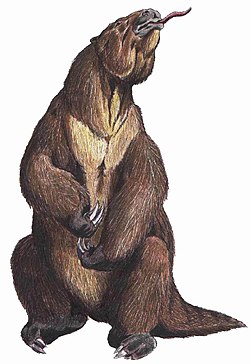| Xibalbaonyx Temporal range: Late Pleistocene (Rancholabrean) ~ | |
|---|---|
| Scientific classification | |
| Kingdom: | Animalia |
| Phylum: | Chordata |
| Class: | Mammalia |
| Order: | Pilosa |
| Family: | † Megalonychidae |
| Subfamily: | † Megalonychinae |
| Genus: | † Xibalbaonyx Stinnesbeck et al. (2017) |
| Type species | |
| †Xibalbaonyx oviceps Stinnesbeck et al 2017 | |
| Other species | |
Xibalbaonyx is an extinct genus of megalonychid ground sloth known from the Late Pleistocene of Mexico. Three species are known: X. oviceps and X. exiniferis from the Yucatan Peninsula and X. microcaninus from Jalisco. The genus is named after Xibalba, the underworld in Maya mythology.

